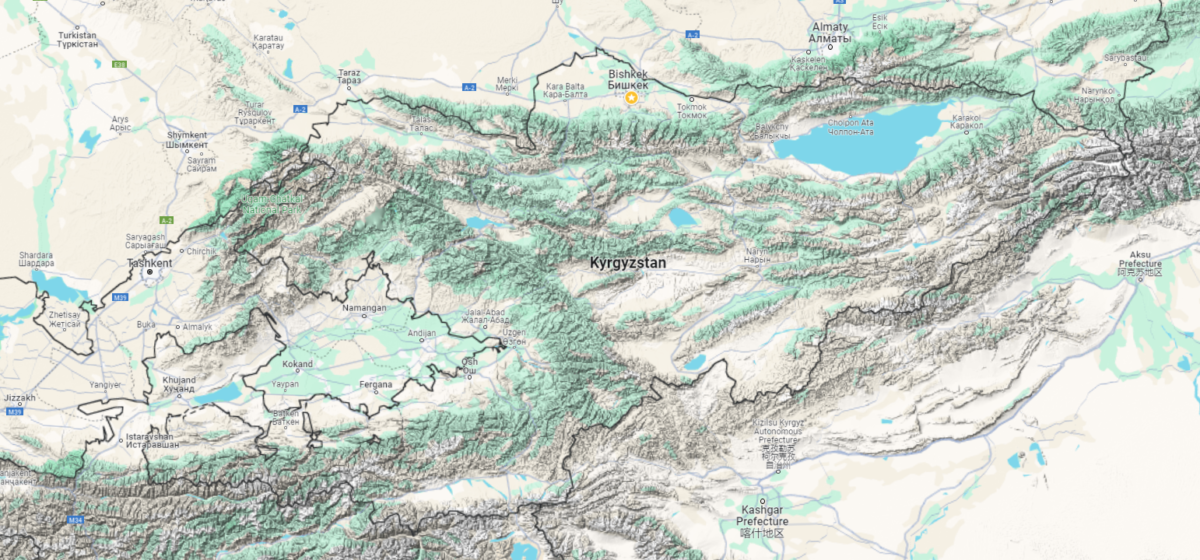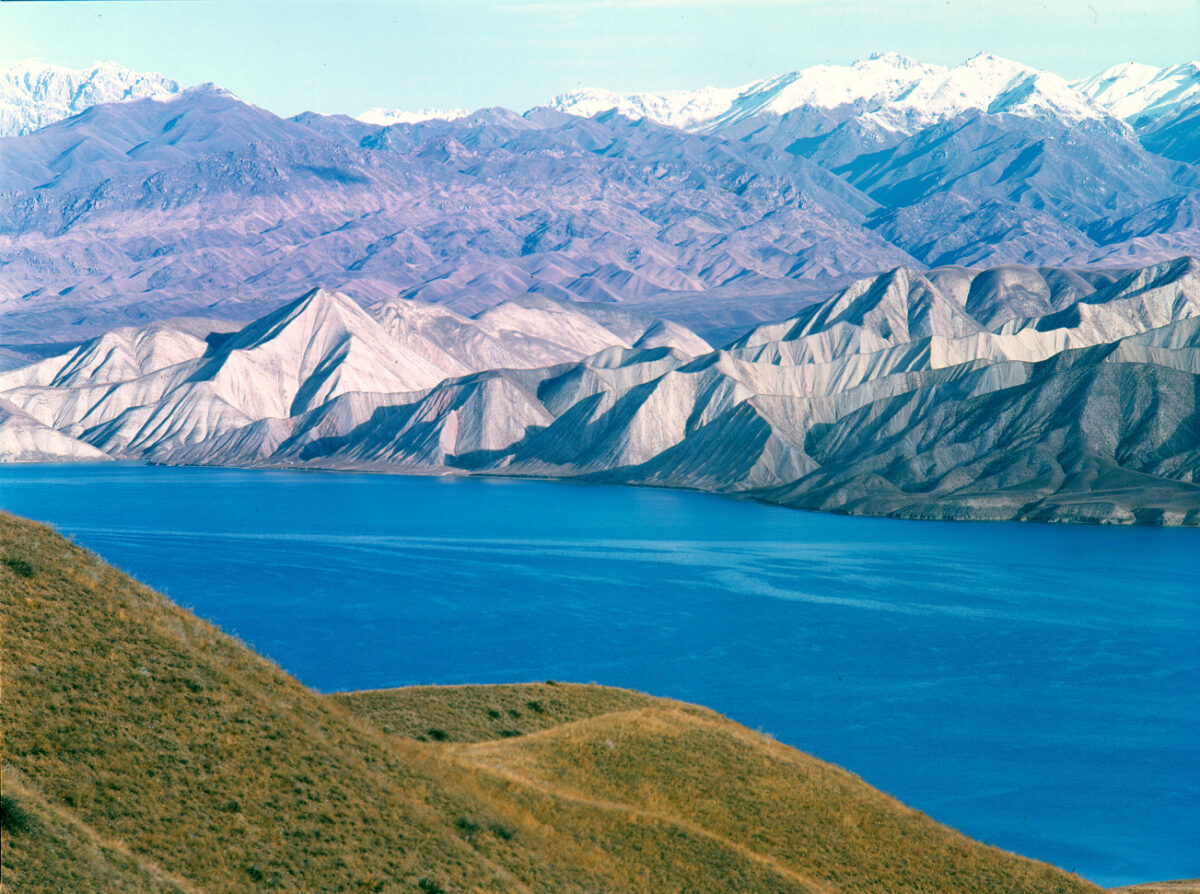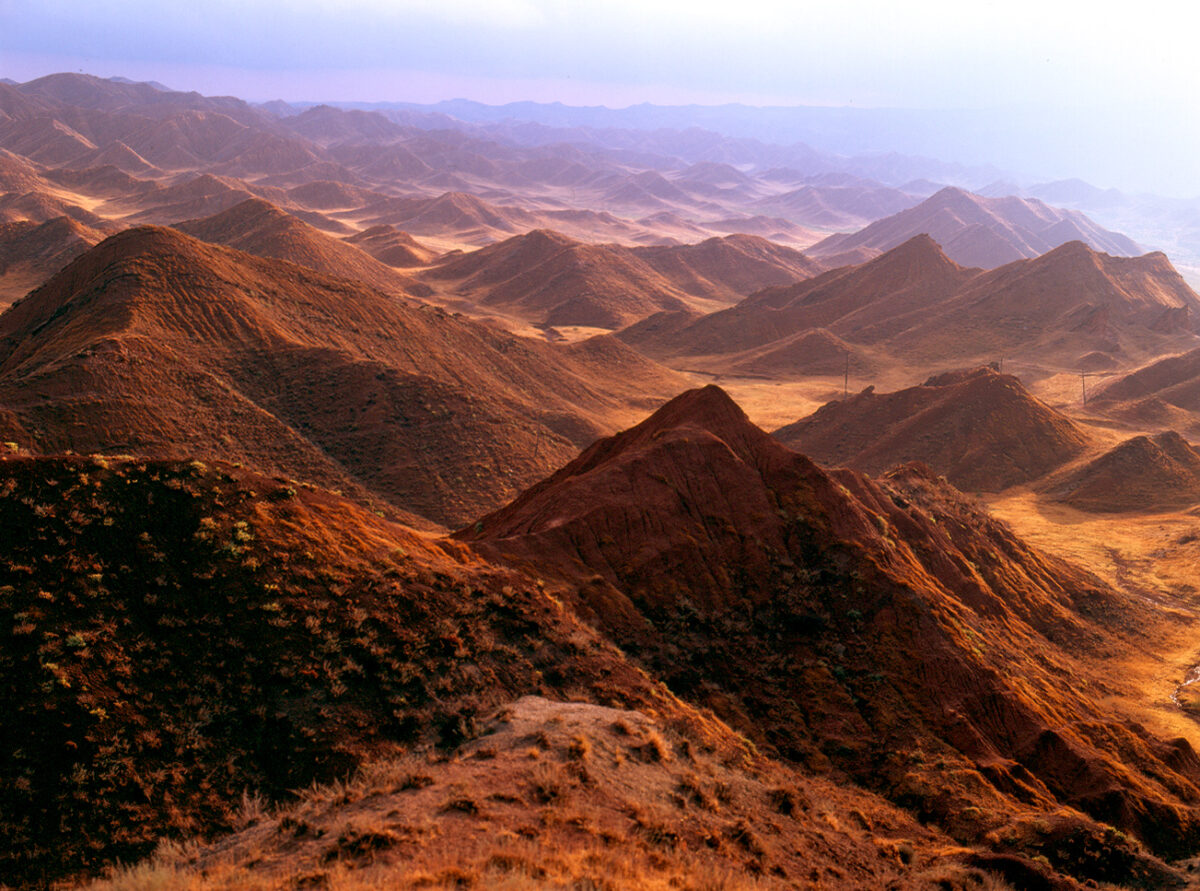Geology of Kyrgyzstan
The territory of Kyrgyzstan is mostly mountainous as it can be seen from the topographic map of the country. Highland occupies over 56% of the territory refers to the highland. The Central Tien Shan, almost the entire Western Tien Shan and part of the Pamir-Alay in the south-west are located in Kyrgyzstan.
The highest absolute elevations are marked on the Khan-Tengri massif (Pobeda Peak – 7,439m), from which mountain ranges divided by intermountain areas and extensive uplands run westward (sublatitudinal direction).

Tien Shan geology overview
Geological structure of Kyrgyzstan is very complicated. Basement benches are formed by Archean and Proterozoic metamorphic complexes. Folded structures are formed by Paleozoic sedimentary and volcanogenic formations. Intermountain areas are formed by Mezo-Cenozoic loose rock mass. Igneous rocks play a big part in geology of the republic. Baikal, Caledonian and Hercynian intrusions of granites and to a lesser extent bedding rocks and alkaline rocks are widely spread among igneous rocks.
Distinct tectonic zoning representing different age of the fold system is characteristic of the Tien Shan located in Kyrgyzstan. Regarding the age of basic phases of tectogenesis within the Tien Shan, there are Caledonian fold area of the Northern Tien Shan, Hercynian fold area of the Southern Tien Shan and fold area of the Middle Tien Shan, where both Caledonian and Hercynian tectonic movements can be traced.
A wide variety of genetic associations of deposits comprising almost all elements in D. I. Mendeleyev’s Periodic Table are characteristic of metallogeny in Kyrgyzstan. Several thousands of deposits and occurrences of minerals were registered in Kyrgyzstan.
The Northern Tien Shan covers the northern regions of Kyrgyzstan. Its southern part bordering the Middle Tien Shan is tectonic. V.A. Nikoayev, famous geologist, discovered and defined it as the most important structural line of Tien Shan (Nikoayev’s Line).
Pre-Paleozoic metamorphic and Lower Paleozoic island-arc sedimentary-volcanogenic formations prevail in the Northern Tien Shan. Middle and upper paleozoic volcanogenic and terrigenous rocks are secondary. Granitoids of the Ordovician-Silurian period occupy approximately half of the region on the surface. The main folding is Caledonian. The area experienced tectonomagmatic activation in the Middle and Late Paleozoic period.
Caledonites of the Northern Tien Shan form a southward “convex bow” on the general plan. Strikes of rocks and structures in the west are mostly north-western, in the central part it is sublatitudinal and in the east – north-eastern. Vertical section of rocks shows several structural levels: Pre-rifian (AR-PR1), Issedonian (R1-2), Baikal (R3-V), Caledonian (PZ1), Epi-Caledonian (D-P) and Alpine (MZ-KZ).
Numerous gold deposits were discovered in the Northern Tien-Shan (Jerui, Taldybulak Levoberezhnyi, Dolpran, Komator, etc.), silver deposits (Kumishtag, Jolsai), arsenic deposit (Uch-Imchek), beryllium deposit (Kalesai, Chetendy, Tuktu-Archa, Uzunbulak, Bokalysai, Dostuk), rare earth deposit (Kutessai), aluminium deposit (Sandyk), vanadium deposit (Bala-Chychkan), copper deposits (Talas Taldybulak, Andash, Aktash, Severnyi), polymetal deposits (Boordu, Kurgan, Tashkoro, Ikichat), bismuth deposits (Mironovskoye, Keminskoye). There are a number of coal deposits (Karakeche, Agulak, Turakavak), deposits of construction and covering materials; large reserves of underground thermal and mineral water used for balneological purposes.
The Middle Tien Shan stretches in a sublatitudinal direction (20-100km wide) to the south of the Northern Tien Shan. Talas-Fergana transverse fault divides it to two separate parts: Naryn (eastern) and Chatkal (western). Nikolayev’s line is its northern boundary, Atbashy-Inylchek fault (in the Naryn sector) and Kara-Suu fault (in the Chatkal sector) are its southern boundary.
The area of the Middle Tien Shan is formed by Proterozoic metamorphic rocks, sandstones, liparites and tillite-like bibbley-rocks of the Riphean-Vendian period, terrigenous rock mass of the Lower Paleozoic period, terrigenous-carbonate sediments of the Devonian and Carbonic periods represented by tectonic blocks and plates. The rocks are breached by granitoids of the Middle and Upper Carbonic period. Granitoids of the Proterozoic and Silurian periods are developed to a lesser extent.
Regarding the structure, eastern and western sectors of the Middle Tien Shan differ from each other.
Folded structures in the Naryn sector have mainly a latitudinal strike. Folded structures in the Chatkal region have a north-east strike changing to south-east strike near the Talas-Fergana fault.
Metallogeny of the Middle Tien Shan is diverse. The following deposits were discivered in this area: gold (Kumtor, Makmal), molybdenum (Molo, Chaartash), tungsten (Kensu, Kumbel), ferrum (Gava, Jetym), uranium, molybdenum and vanadium (Saryjaz), copper (Kuru-Tegerek, Bozymchak), polymetal (Sumsar), antimony (Terek, Kassan). There are also large plumbago and wollastonite deposits.
The Southern Tien Shan replaces (to the south) folded structures of the Middle Tien Shan. In the south it borders the folded system of the northern Pamir (to the west of the Talas-Fergana fault) and Tarim platform (downstream of the Saryjaz river).
Sedimentary and volcanogenic rocks PZ2 and PZ3 prevail in this region. Pre-Paleozoic rocks and intrusive bodies are secondary. The main folding phase is Upper Paleozoic. Granitoid magmatism is widely spread.
The Southern Tien Shan as distinct from the Northern and Middle Tien Shan is formed by the Middle Paleozoic rocks developed in the geological setting from mid-oceanic ranges to the passive margin of the continent. The processes of overthrust-folding tectonics and intensive Hercynian orogeny can be observed in this area.
Minerals of the Southern Tien Shan are represented by ores of antimony (Kadamjai, Abshir), hydrargyrum (Khaidarkan, Chonkoi), gold (Tokhtozon, Altyn Jylga, Nichkesu, Togolok), silver (Tura-Bulak), tungsten (Trudovoye, Meliksu), tin (Trudovoye, Uchkoshkon), aluminium (Zardalek, Katranbashy, Karanglinskoye), copper (Oital), polymetals (Turabulak, Kanigut), arsenic (Turuk), cobalt (Chalkuiruk), strontium (Jidabulak), tantalum and niobium (Delbek, Tutek), ferrum (Nadir). There are numerous deposits of coal and non-metallic raw materials. Oil and gas recovery is in progress. All other areas are tightly connected with collision granitoids of the Permian age except sedimentary deposits of polymetals (D2), bauxites (С2), copper (К1-2) and strontium (К2).
The country has a considerable potential regarding various minerals. The major minerals include gold, hydrargyrum, antimony, coal, rare earths, tin, tungsten, uranium, non-metallic raw materials and underground water. There is a possibility to organize mining of ferrum, titanium, vanadium, aluminium, copper, molybdenum and beryllium. Tantalum-niobates, cobalt, zirconium, lithium and gemstones have commercial significance.




